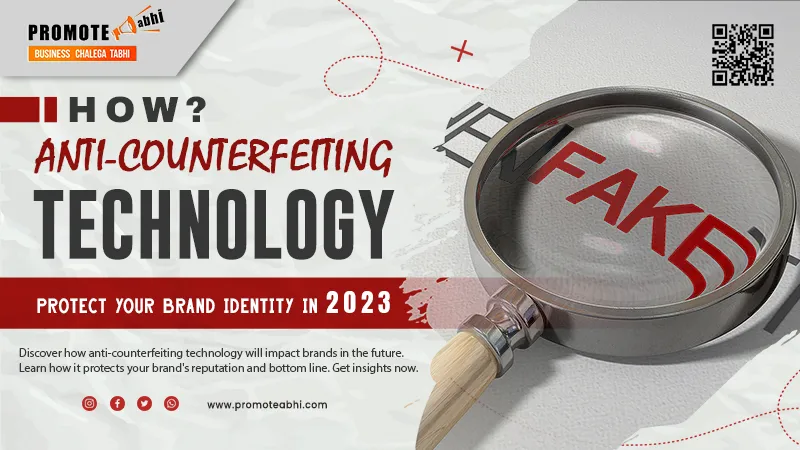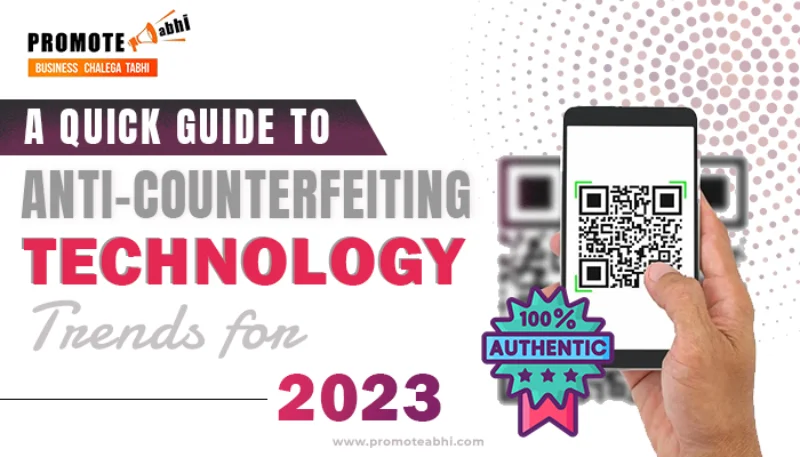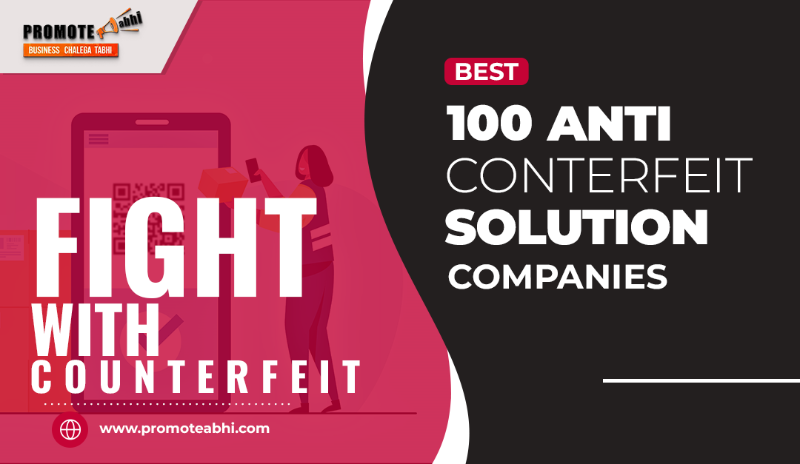Welcome to this comprehensive guide that will walk you through the crucial aspects of intellectual property protection, trademark registration, and the best practices to safeguard your brand identity and combat unauthorized distribution. Discover the significance of securing your intellectual property, the value of trademark registration, and practical strategies to preserve your brand's integrity and prevent unauthorized product distribution. This blog article is designed to provide you with valuable insights and actionable steps to protect your brand in the digital landscape.
Step-1. The Importance of Intellectual Property Protection and Trademark Registration
Intellectual property (IP) is the intangible assets that differentiate your brand from competitors. It includes trademarks, copyrights, patents, and trade secrets. Protect your intellectual property, maintain your brand's uniqueness, and prevent unauthorized use. Trademark registration is a fundamental method to safeguard the identity of your brand.
Understanding Trademark Registration
Trademark registration grants you legal protection and exclusive rights to use your brand name, logo, or slogan. Registering your trademark can prevent others from using similar marks that may confuse consumers. It provides a strong foundation for brand protection and helps establish your brand's credibility in the marketplace.
Benefits of Trademark Registration:
- Legal Protection: Trademark registration allows you to take legal action against infringers and protect your brand from unauthorized use.
- Brand Recognition: Registered trademarks are easily recognizable symbols of your brand, fostering trust and familiarity among consumers.
- Marketplace Distinction: Trademark registration sets your brand apart from competitors, preventing others from using similar marks that may dilute your brand identity.
- Licensing Opportunities: Trademark registration opens doors to licensing agreements, allowing you to generate additional revenue by granting others the right to use your brand.
Importance of Intellectual Property Protection
Intellectual property protection goes beyond trademarks and encompasses other forms of IP, such as copyrights and patents. Here's why safeguarding your intellectual property is crucial:
- Preserving Innovation: Patents protect your inventions, encouraging innovation by granting you exclusive rights to your creations for a specified period.
- Securing Creative Works: Copyrights safeguard original works of authorship, including literary, artistic, and musical creations, ensuring you have control over their usage.
- Protecting Trade Secrets: Trade secrets are valuable business information that gives you a competitive advantage. Implementing measures to protect trade secrets is vital for brand security.
The Role of Intellectual Property in Brand Security
The intellectual property ensures brand security by safeguarding creative assets, maintaining brand integrity, and preventing unauthorized use. Let's explore how intelligent property protection contributes to brand security:
- Preventing Brand Infringement: Intellectual property protection, including trademarks and copyrights, protects against brand infringement. By registering your trademarks and copyrights, you establish a legal framework to enforce your rights and take action against individuals or businesses that attempt to use or profit from your creative assets without permission.
- Counterfeiting Prevention: Counterfeiting is a significant brand threat, particularly in the digital realm. Intellectual property protection enables brand owners to combat counterfeiting by taking legal action against counterfeiters and working with law enforcement agencies to seize counterfeit products and shut down illicit operations.
- Online Brand Management: The internet provides opportunities and challenges for brand management. Intellectual property protection helps brand owners monitor and control their online presence. By actively monitoring online platforms, social media, and e-commerce websites, brands can identify and address brand infringement, unauthorized product distribution, or misleading use of their intellectual property.
- Brand Reputation Management: Intellectual property protection contributes to brand reputation management by ensuring your brand's creative assets are not misused or associated with unauthorized or low-quality products. By controlling the use of your trademarks, copyrights, and other intellectual property, you can maintain the integrity of your brand and protect its reputation.
- Anti-Counterfeiting Strategies: Intellectual property protection allows brand owners to develop effective anti-counterfeiting strategies. These strategies include implementing product security features, investigating counterfeiters, and collaborating with law enforcement agencies and industry organizations to combat counterfeiting.
- Domain Name Protection: Intellectual property protection extends to domain names as well. Registering domain names consistent with your brand and trademarks helps prevent cybersquatting and unauthorized use of your brand name in online domains.
- Gray Market Control: Gray market activities, where genuine products are sold through unauthorized channels, can harm a brand's reputation and erode consumer trust. Intellectual property protection allows brand owners to enforce their distribution policies and take action against unauthorized sellers, ensuring that products are sold through authorized and legitimate channels.
- Unauthorized Product Distribution: Intellectual property protection enables brand owners to combat unauthorized product distribution. By monitoring distribution networks, implementing strict contractual agreements with authorized distributors, and taking legal action against unauthorized sellers, brand owners can maintain control over their products' distribution and ensure they reach customers through trusted and reputable channels.
Step-2. Best Practices for Protecting Your Brand Identity and Preventing Unauthorized Distribution
Protecting your brand identity and preventing unauthorized distribution are essential for maintaining brand value and reputation. Implementing the following best practices will strengthen your brand protection efforts:
1. Building a Strong Brand Identity
Establishing a solid brand identity helps differentiate your brand and build customer loyalty. Consider the following:
- Clearly define your brand's mission, vision, and values.
- Develop a distinctive brand name, logo, and tagline.
- Maintain consistency in brand messaging across all marketing channels.
- Create brand guidelines for employees and authorized partners.
2. Brand Monitoring and Enforcement
Regularly monitoring your brand's online presence allows you to identify potential infringements and take appropriate action. Here's what you can do:
- Use Google Alerts to stay informed whenever your brand is mentioned online.
- Use brand monitoring tools like Mention or Brand24 to track brand mentions and sentiment.
- Conduct periodic searches on social media platforms to identify unauthorized use of your brand.
3. Preventing Brand Infringement
Proactively preventing brand infringement is crucial for maintaining brand integrity and protecting intellectual property. Follow these best practices:
- Conduct thorough research before finalizing your brand name or logo to ensure it doesn't infringe upon existing trademarks.
- Regularly monitor trademark databases to identify potential conflicts or infringements.
- Enforce your trademark rights by sending cease and desist letters to infringers or taking legal action if necessary.
- Educate your employees and partners about respecting and protecting your brand identity.
- Implement internal procedures to ensure compliance with brand guidelines and trademark usage.
4. Combating Unauthorized Distribution
Unauthorized distribution of your products or services can harm your brand's reputation and revenue. Take proactive measures to combat this issue:
- Implement strict distribution agreements with authorized retailers and distributors.
- Regularly audit your distribution channels to identify unauthorized sellers.
- Establish a solid online presence through official e-commerce platforms and enforce MAP (Minimum Advertised Price) policies.
- Monitor online marketplaces and take action against sellers offering counterfeit or unauthorized products.
5. Building Consumer Trust
Maintaining consumer trust is paramount for brand protection. Implement the following strategies:
- Provide transparent and accurate product information to customers.
- Offer customer support channels to address inquiries and concerns promptly.
- Encourage customer reviews and testimonials to build social proof and credibility.
- Engage with customers on social media to foster community and brand loyalty.
By implementing these best practices, you can significantly enhance your brand protection efforts and mitigate unauthorized use or distribution risks.
Step-3. Role of Anti-Counterfeiting Technology to Protect a Brand
In today's digital age, brand protection has become a critical concern for businesses of all sizes. Counterfeiting, trademark infringement, and unauthorized product distribution threaten a brand's reputation, customer trust, and revenue.
To combat these challenges, implementing effective anti-counterfeiting strategies is essential. One of the critical components of such techniques is leveraging anti-counterfeiting technology. Let's explore the role of anti-counterfeiting technology in protecting a brand and discuss various strategies and best practices to safeguard your brand's integrity and combat counterfeiting.
Understanding the Importance of Brand Protection
Before delving into the role of anti-counterfeiting technology, it's crucial to understand the significance of brand protection in today's digital landscape. Brand protection involves proactive measures to secure and preserve a brand's identity, reputation, and intellectual property. By implementing robust brand protection strategies, businesses can:
- Safeguard their brand's reputation and customer trust.
- Maintain market share and competitive advantage.
- Protect their intellectual property rights.
- Prevent revenue loss due to counterfeit products and unauthorized distribution.
- Ensure brand consistency and customer experience.
- Mitigate legal risks associated with trademark infringement and copyright violation.
The Growing Threat of Counterfeiting
Counterfeiting is a global issue that affects brands across various industries. Counterfeit products harm a brand's reputation, endanger consumer safety, and contribute to economic losses. According to the International Chamber of Commerce (ICC), counterfeiting and piracy could reach a staggering value of $4.2 trillion by 2022. This alarming trend highlights the urgent need for effective brand protection measures.
Counterfeiters use increasingly sophisticated methods to produce fake products that closely resemble genuine ones, making it challenging for consumers to identify the difference. This is where anti-counterfeiting technology plays a crucial role.
Leveraging Anti-Counterfeiting Technology
Anti-counterfeiting technology refers to various advanced tools, techniques, and solutions to detect, prevent, and deter counterfeiting activities. By leveraging these technologies, brands can enhance their brand protection efforts and ensure the authenticity of their products. Let's explore some vital anti-counterfeiting technologies and their role in protecting a brand:
1. Holograms and Security Labels
Holograms and security labels are widely used as visible indicators of product authenticity. These technologies incorporate unique patterns, colors, and features that are difficult to replicate, providing a visual cue for consumers to identify genuine products. Holograms can be applied to packaging, labels, or directly on the product to act as a security feature.
2. Unique Serial Numbers and Barcodes
Assigning unique serial numbers or barcodes to each product enables traceability and authentication throughout the supply chain. This technology helps track product movement, identify counterfeit items, and facilitate product recalls if necessary.
3. RFID (Radio-Frequency Identification)
RFID technology utilizes radio waves to transmit information stored in electronic tags attached to products or packaging. RFID tags can be embedded with encrypted data that verifies the product's authenticity. RFID readers can scan these tags to ensure the product's legitimacy.
4. Tamper-Evident Packaging
Tamper-evident packaging provides visible signs of tampering or unauthorized access. This technology is crucial for ensuring the product reaches the consumer in its original state without tampering or substituting.
5. Track and Trace Systems
Track and trace systems utilize a combination of technologies, such as barcodes, RFID, and GPS, to monitor and trace the movement of products across the supply chain. This technology enables businesses to track product authenticity, detect diversion, and identify potential points of counterfeiting.
6. Authentication Apps and Mobile Solutions
With the widespread use of smartphones, authentication apps and mobile solutions have emerged as practical tools for brand protection. These apps allow consumers to verify the authenticity of products by scanning unique QR codes or barcodes. The app instantly provides information about the product's origin and manufacturing details and ensures its genuineness.
7. Online Brand Monitoring and Enforcement
In the digital realm, brand protection extends beyond physical products. Online brand monitoring and enforcement involve actively monitoring online platforms, social media channels, e-commerce websites, and marketplaces for counterfeit or unauthorized listings. Advanced software and tools can help automate this process, enabling swift detection and takedown of infringing content.
8. Collaboration with Law Enforcement and Industry Associations
Collaboration with law enforcement agencies and industry associations is crucial in combating counterfeiting. By working together, brands can share intelligence, coordinate enforcement efforts, and support legal actions against counterfeiters. Building strong relationships with relevant authorities and associations strengthens the brand protection ecosystem.
Best Practices for Implementing Anti-Counterfeiting Technology
Implementing anti-counterfeiting technology requires a comprehensive approach that combines technology, education, and enforcement. When incorporating anti-counterfeiting technology into your brand protection strategy, keep these best practices in mind:
- Conduct a Risk Assessment: Assess your brand's vulnerability to counterfeiting and identify high-risk areas within your supply chain, distribution channels, and online presence.
- Choose the Right Technologies: Select anti-counterfeiting technologies that align with your brand's needs, product characteristics, and industry requirements. Consult with experts or engage a brand protection service provider to determine the most effective solutions for your brand.
- Educate Consumers: Raise awareness among your target audience about the risks associated with counterfeit products and educate them on identifying genuine products. Provide clear guidelines on how to verify product authenticity using the implemented technology.
- Establish Partnerships: Collaborate with industry associations, trade organizations, and law enforcement agencies to share information, collaborate on enforcement efforts, and stay updated on emerging counterfeiting trends.
- Implement Supply Chain Controls: Strengthen your supply chain by implementing robust control measures, such as strict vendor selection, regular audits, and secure transportation and warehousing practices. Ensure that all stakeholders in the supply chain are committed to maintaining brand integrity.
- Monitor Online Presence: Regularly monitor online platforms, social media channels, and e-commerce websites for counterfeit or unauthorized listings. Implement automated monitoring tools or engage brand protection services to streamline the process and ensure prompt action against infringing content.
- Enforce Intellectual Property Rights: Register your trademarks and other intellectual property rights to establish legal protection. In case of infringement, enforce your rights through legal actions, cease-and-desist notices, and takedown requests.
- Stay Updated: Counterfeiters continually evolve their tactics, so it's crucial to stay updated on the latest counterfeiting trends, technology advancements, and legal developments. Adjust your brand protection strategy accordingly to maintain its effectiveness.
Conclusion
In conclusion, brand protection is paramount in safeguarding your brand's reputation, customer trust, and revenue. Implementing anti-counterfeiting technology is vital in protecting your brand from counterfeit products and unauthorized distribution. You can enhance product authenticity and consumer confidence by leveraging technologies such as holograms, unique serial numbers, RFID, and tamper-evident packaging.
Additionally, monitoring online platforms, collaborating with industry associations, and enforcing intellectual property rights are vital components of a robust brand protection strategy.
Remember, brand protection requires a proactive and multi-layered approach. Continuously evaluate and update your brand protection measures to stay ahead of counterfeiters and ensure the long-term success of your brand in the marketplace.
*Note: The information provided above is intended for educational purposes only and should not be considered legal advice.


















Comments